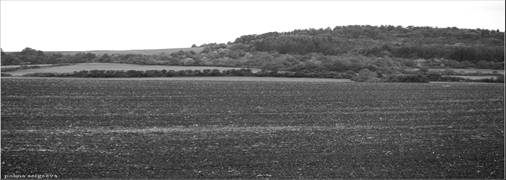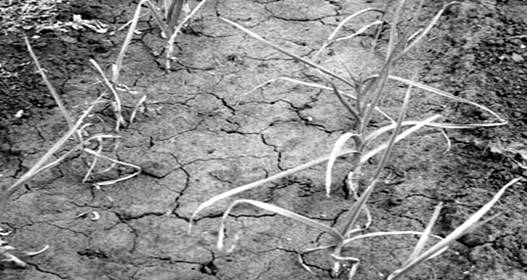Text 5 characteristics of soil
The method and rate of soil formation differs throughout a body of soil. As a result, the soil develops layers. These layers are called soil horizons. Soil horizons may be thick or thin, and they may resemble or differ from the surrounding horizons. The boundaries between the layers can be distinct or barely noticeable.
Most soils include three major horizons. The upper two called the A and B horizons are the most highly developed layers. The A horizon is also known as topsoil. The lowest horizon called the C-horizon or the subsoil, is exposed to little weathering. Its composition resembles that of the parent material. Pedologist describe soils by the characteristics of the soil horizons, including (1) color, (2) texture, (3) structure, and (4) chemical conditions.
Color.Soils range in color from yellow and red to dark brown and black. The color of a soil helps pedologist estimate the amounts of air, water, organic matter, and certain elements in the soil. For example, a red color may indicate that iron compounds are present in the soil.
Texture of a soil depends on the size of its mineral particles. Sands are largest particles. The individual grains can be seen and felt. Silts are just large enough to be seen, and clays are microscopic. Pedologists divide soils into textural classes according to the amounts of sand, silt and clay in a soil. For example, the mineral portions of soils classified as loam contain from 7 to 27 per cent clay and less than 52 per cent sand. In silty clay, more than 40 per cent of the mineral particles are clay, and more than 40 per cent are silt. Texture helps determine how thoroughly water drains from a soil. Sands promote drainage better than clays.
1. Study the following words:
Soil, layer, boundary, topsoil, subsoil, parent material, resemble, major, noticeable, pedologist, organic matter, indicate, iron compound, amount, loam, contain, clay, silt, thoroughly, drainage, promote.
2. Define the part of speech of the following words:
Formation, estimate, barely, silty, mineral, boundary, texture, thin, microscopic, textural, largest, grain, highly, characteristics, layer.
Which adjectives go together with the word “soil” ?
Ideal, suitable, close-growing, pervious, approximate, special, saturated, available, artificial, shallow, hydraulic, steep.
4. Make up sentences with word combinations given above in exercise 3:
5. Complete the sentences with appropriate words from the text:
1. Soil horizons may be thick or … , and they may resemble or … from thesurrounding horizons.
2. Texture helps … how thoroughly water drains from a soil.
3. The … between the … can be distinct or barely noticeable.
4. The color of a soil helps … estimate the … of air, water, organic matter, and certain elements in the soil.
5. Sands … drainage better than … .
6. Give a short written annotation of text 5:

TEXT 6 STRUCTURE OF SOIL
When soil particles aggregate, they form clumps of soil that are called peds. Most peds range from less than ½ to 6 inches (1.3 to 15 centimeters) in diameter. Their shape and arrangement determine a soil’s structure. The ability of peds and soil particles to stick together and hold their shape is called consistence.
Most soils contain two or more kinds of structures. Some soils have no definite structure. In some such soils, the peds lack a definite shape or arrangement. In others, the particles do not aggregate.
There are three main kinds of soil structures: (1) platelike, (2) prismlike, and (3) blocklike. Platelike peds are thin, horizontal plates that occur in any horizon. Prismlike peds are column-shaped subsoil structures. Blocklike peds look like blocks with flat or curved sides. Large, flat –sided, blocklike, peds commonly occur in subsoils. Small, rounded, blocklike peds make up most topsoils. They contain more organic matter and hold water and nutrients better than do larger peds.
1. Study the following words :
Soil particles, aggregate, clump, peds, shape, arrangement, to stick, consistence, thin, flat, curved, make up, nutrients.
2. Define the part of speech of the following words:
Stick, platelike, definite, ability, curved, commonly, nutrients, arrangement, structure, rounded, make up.
3. Translate the following derivatives:
Arrangement, arrange, arranging, structures, structural, common, commonly, define, definition, defining, definite.
4. Give definitions of the terms ‘topsoil’, ‘subsoil’:
5. Translate the following sentences:
1. Most soils contain two or more kinds of structures.
2. Most peds range from less than ½ to 6 inches in diameter.
3. Small, rounded, blocklike peds make up most topsoils.
4. Some soils have no definite structure.
6. Retell the text ‘ Structure of soil’:

